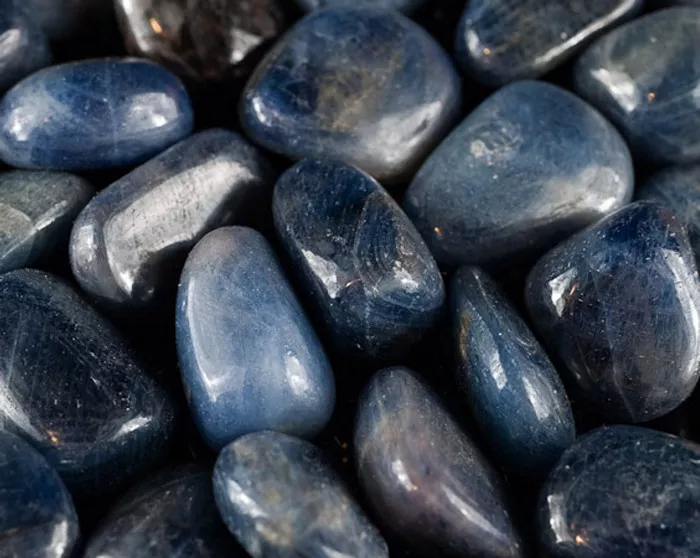Sapphires are among the most coveted and mesmerizing gemstones in the world. Their enchanting colors and exquisite beauty have captivated humanity for centuries. But have you ever wondered how these magnificent gemstones are formed? In this simple guide, we will explore the fascinating journey of sapphire formation, from their geological origins to the intricate processes that give them their alluring qualities.
The Geological Origins:
Sapphires belong to a family of minerals called corundum, which is composed of aluminum oxide (Al2O3). The formation of sapphires begins deep within the Earth’s crust, where a combination of heat, pressure, and specific mineral conditions come into play.
During the earth’s geological processes, such as mountain-building events or tectonic plate movements, igneous and metamorphic rocks can undergo significant changes. These changes often involve the introduction of elements like aluminum, oxygen, and trace impurities such as iron, titanium, and chromium. It is within this dynamic geological environment that sapphires start to take shape.
Magmatic Formation:
One of the primary ways sapphires form is through magmatic processes. When molten rock, known as magma, cools and solidifies beneath the Earth’s surface, it can provide an environment conducive to sapphire formation. Sapphires that develop through magmatic processes are referred to as “primary” or “igneous” sapphires.
As the magma cools, it undergoes a slow crystallization process. During this process, aluminum and oxygen atoms combine to form corundum crystals. The presence of trace impurities, such as iron or titanium, gives sapphires their distinctive colors. For instance, iron impurities result in blue sapphires, while titanium impurities contribute to the formation of yellow, green, or pink sapphires.
Over time, as the magma chamber cools further and different geological processes occur, the corundum crystals can become concentrated in specific regions. This concentration creates gem-rich zones where sapphires can be found.
Metamorphic Formation:
Another significant process in sapphire formation is metamorphism. Metamorphic rocks are those that have undergone intense pressure and heat deep within the Earth’s crust. Under these conditions, pre-existing minerals can be transformed, leading to the creation of sapphires.
During metamorphism, existing aluminum-rich minerals, such as aluminum silicates, are subjected to high temperatures and pressures. These conditions cause a rearrangement of atoms, resulting in the formation of corundum crystals – the building blocks of sapphires.
Metamorphic sapphires can originate from various rock types, including schists, gneisses, and marbles. The specific mineral compositions and geological processes involved in each rock type influence the color and quality of the sapphires formed.
Secondary Deposits:
Sapphires can also form in secondary deposits, which occur when primary sapphire-bearing rocks undergo weathering, erosion, and transportation. Over millions of years, natural forces like water, wind, and ice can break down the surrounding rocks, carrying the sapphires along with other sediment particles.
These transported sapphire crystals can then accumulate in new environments, such as riverbeds, alluvial plains, or even marine sediments. Due to their durability, sapphires can withstand the rigors of transportation, allowing them to survive the journey from their original source to secondary deposits.
In secondary deposits, sapphires are often mixed with other minerals, rocks, and sediments. They may require careful extraction methods such as panning or mining to separate the precious gemstones from the surrounding materials.
Gemstone Enhancement:
It’s worth noting that not all sapphires found in the market are in their natural state. Gemstone enhancement techniques, such as heat treatment, can be employed to improve the appearance and color of sapphires. Heat treatment involves subjecting the gemstones to controlled heating, which can intensify their colors or eliminate undesired impurities.
Heat treatment is a widely accepted and practiced method in the gemstone industry, and it does not diminish the value or authenticity of the sapphire. However, it is important for buyers and sellers to disclose such treatments to ensure transparency and informed purchasing decisions.
Conclusion:
The formation of sapphires is a complex and captivating geological process that spans millions of years. Whether through magmatic processes, metamorphism, or secondary deposits, the journey of sapphire formation showcases the remarkable forces at work beneath the Earth’s surface.
Understanding the origins of sapphires adds an extra layer of appreciation for these mesmerizing gemstones. From the intense heat and pressure that shape their crystalline structures to the trace impurities that give them their beautiful colors, each sapphire is a testament to the Earth’s geological history.
Next time you hold a sapphire in your hand or admire its brilliance in a piece of jewelry, take a moment to reflect on the incredible journey it has undertaken. These gemstones are not just objects of beauty; they are windows into the ancient processes that have shaped our planet.
Whether you’re a gemstone enthusiast, a jeweler, or simply someone who appreciates the wonders of nature, understanding how sapphires are formed adds depth and significance to your experience with these precious gems. So, the next time you gaze upon a sapphire, remember the immense geological forces that brought it to life and cherish the remarkable beauty that nature has created.


